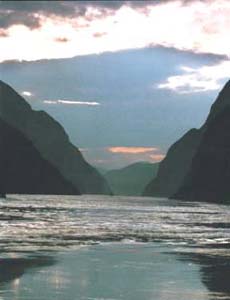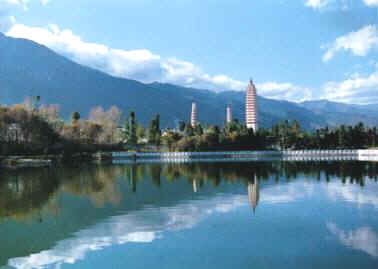|
|
|
Rivers
China
abounds in rivers. More than 1,500 rivers each drain 1,000 sq km
or larger areas. More than 2,700 billion cu m of water flow along
these rivers, 5.8 percent of the world’s total. Most of the large
rivers find their source in the Qinghai-Tibet Plateau, and as a
result China is rich in water-power resources, leading the world
in hydropower potential, with reserves of 680 million kw.
China’s
rivers can be categorized as exterior and interior systems. The
catchment area for the exterior rivers that empty into the oceans
accounts for 64 percent of the country’s total land area. The Yangtze,
Yellow, Heilongjiang, Pearl, Liaohe, Haihe, Huaihe and Lancang rivers
flow east, and empty into the Pacific Ocean. The Yarlungzangbo River
in Tibet, which flows first east and then south into the Indian
Ocean, boasts the Grand Yarlungzangbo Canyon, the largest canyon
in the world, 504.6 km long and 6,009 m deep. The Ertix River flows
from the Xinjiang Uygur Autonomous Region to the Arctic Ocean. The
catchment area for the interior rivers that flow into inland lakes
or disappear into deserts or salt marshes makes up 36 percent of
China’s total land area. Its 2,179 km make the Tarim River in southern
Xinjiang China’s longest
interior river.
|
|

The Yangtze is the largest river in China. The picture shows the
Xilingxia Gorge of the Yangtze River.
|
The
Yangtze is the largest river in China, and the third- longest in the
world, next only to the Nile in northeast Africa and the Amazon in
South America. It is 6,300 km long, and has a catchment area of 1.809
million sq km. The middle and lower Yangtze River’s warm and humid
climate, plentiful rainfall and fertile soil make the area an important
agricultural region. Known as the “golden waterway,” the Yangtze is
a transportation artery linking west and east. The Yellow River is
the second-largest river in China, 5,464 km in length, with a catchment
area of 752,000 sq km. The Yellow River valley was one of the birthplaces
of ancient Chinese civilization. It has lush pastureland and abundant
mineral deposits. The Heilongjiang River is north China’s largest.
It has a total length of 4,350 km, of which 3,101 km are within China.
The Pearl River is the largest river in south China, with a total
length of 2,214 km. In addition to those endowed by nature, China
has a famous man-made river—he Grand Canal, running from Beijing in
the north to Hangzhou in the south. Work first began on the Grand
Canal as early as in the fifth century B.C. It links five major rivers—the
Haihe, Yellow, Huaihe, Yangtze and Qiantang. With a total length of
1,801 km, the Grand Canal is the longest as well as the oldest man-made
waterway in the world. |
|

Erhai
Lake is a fresh water lake on the plateau of Yunnan. The picture
shows
the Triple Pagodas, one of the famous scenes by Erhai Lake.
|
|



